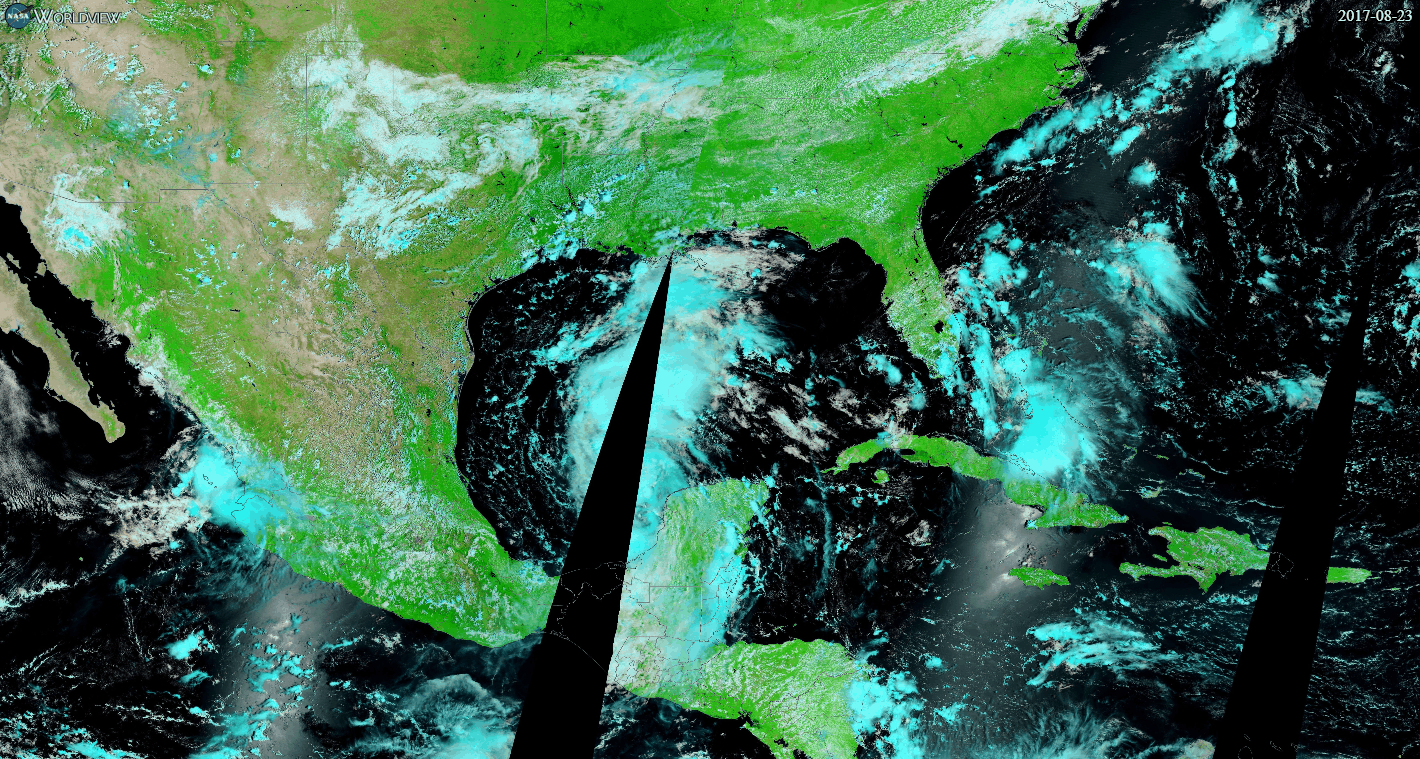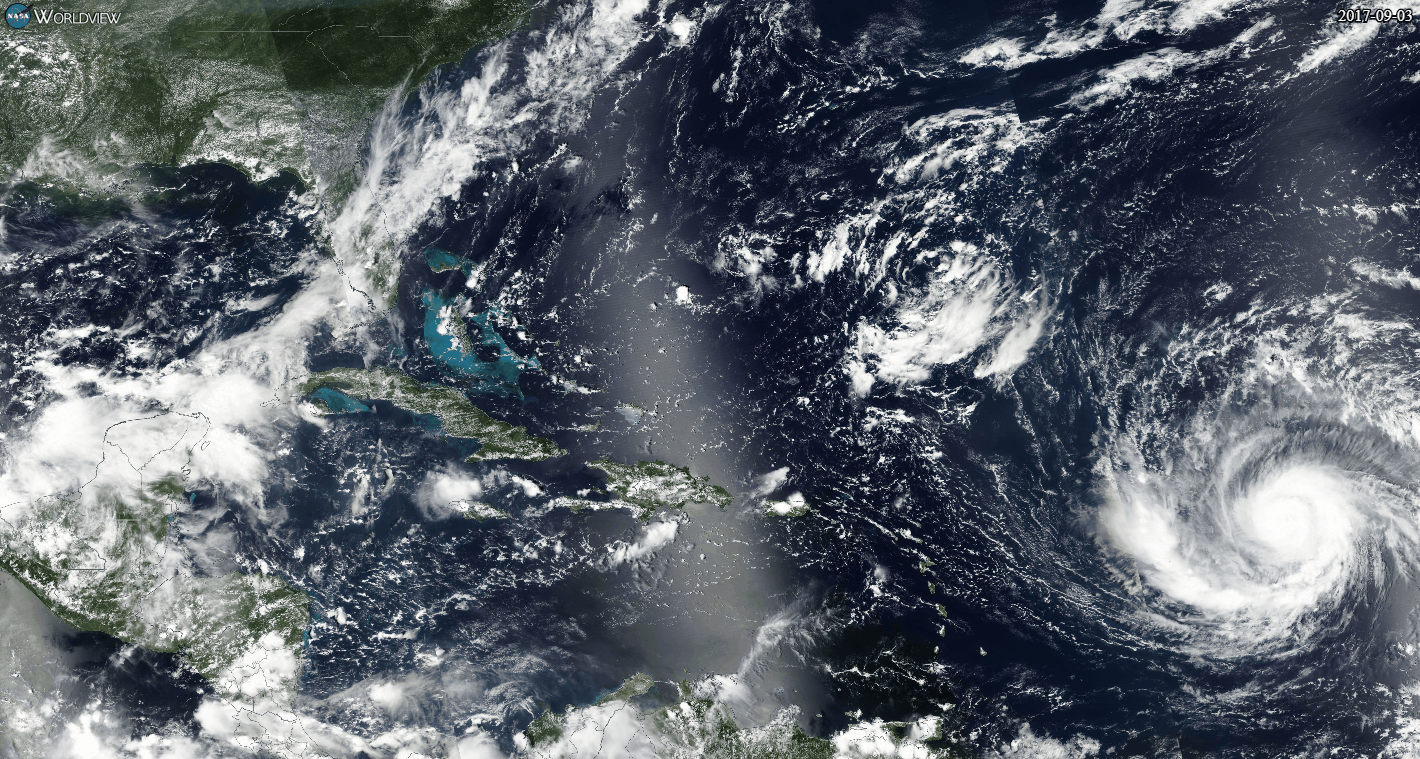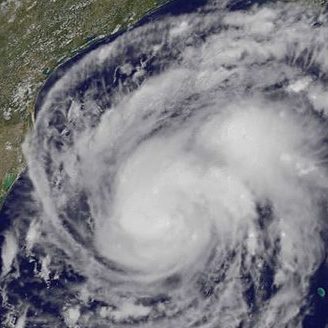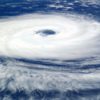Hurricane Harvey (August 26-31st)
On August 17th, the National Hurricane Center identified Tropical Storm (TS) Harvey just before it passed through the Lesser Antilles, the islands that form the eastern boundary of the Caribbean Sea with the Atlantic Ocean. Over the next two days TS Harvey moved swiftly to the west into the Caribbean under the influence of an expansive ridge of high pressure but the storm began to rapidly lose energy on the 19th of August and was subsequently downgraded to a tropical depression (TD). As TD Harvey moved from the northwestern Caribbean Sea into the Gulf of Mexico over the next four days it gained strength and was upgraded again to a Tropical Storm (TS). By the 24th of August TS Harvey had rapidly intensified in the Gulf of Mexico and was upgraded to a Category 3 Hurricane. Hurricane Harvey made landfall in the early morning of 26 August in Rockport, Texas as a Category 4 Hurricane with a reported 130 mph maximum sustained winds. Harvey’s center of circulation stalled over South Texas for four days dumping 40 and even 50 inches of rain in the Houston and Beaumont areas. The storm moved slowly east back into the Gulf of Mexico before making a final landfall near Cameron, Louisiana, on August 30th and finally dissipating to the north in the days following.
Harvey’s slow movement from 26-30 August resulted in catastrophic flooding in southeast Texas. Numerous flash flood emergencies were issued for the Houston and Beaumont metropolitan areas as well as Bastrop County and nearby communities. Wind gusts from Harvey exceeded 100 mph in many locations, leading to widespread destruction of homes and buildings. Thousands of homes were affected by Harvey, including over 9,000 that were completely destroyed and more than 185,000 that sustained damage according to the Texas Department of Public Safety. Close to 700 businesses were also reported as damaged. Throughout Texas, more than 300,000 people were left without electricity and as of September 6th, at least 70 deaths have been confirmed as a result of Hurricane Harvey.
Additional Info:

Hurricane Harvey hangs over coastal Texas from August 23rd to September 1st
Hurricane Irma (September 3-11th)
Hurricane Irma reached the United States Sunday Morning, making landfall in the Lower Florida Keys as a Category 4 Hurricane. A few hours later, Category 3, it made landfall a second time just south of Naples, FL on the Southeast coast of Florida. Due to the extreme size and major hurricane status, most of Southern Florida was warned to evacuate ahead of the storm late last week. Upon landfall, extreme winds battered both southern coasts as wind speeds were recorded at 142 mph in Naples and 99 mph in Miami Beach. Storm Surge from the large powerful storm was reported in many places near ten feet along both coasts affected. On Monday, Irma brought heavy rain and wind through the northern Florida city of Jacksonville where 350 people were rescued from the flooding. Irma also pummeled the Charleston area on Monday with over 8 inches of rain and a nearly 10-foot storm surge. The past 48 hours, evacuated Floridians are again dealing with bumper-to-bumper traffic heading home to face monumental cleanups throughout the state.
Wednesday the 13th, the storm has finally completely broken up, and the National Hurricane Center has stopped updating their reports on the storm. In the wake of the storm, President Donald Trump announced this afternoon that he is set to travel to Florida on Thursday. Moody’s estimates Irma caused $83 billion in damage and 77 deaths have been attributed to the storm. Florida utilities have made good progress in restoring power to communities, as 60% of power has been restored, but 4.6 million people are still without power. It could be months before power is restored to some of the islands that were devastated by the storm.
Florida Keys:
The Florida Keys were the hardest hit and today is the first day that the roads were cleared for people to return to their homes for most of the keys. All 42 bridges along US 1 have been inspected and cleared by the Florida Department of Transportation. 80% of the roads across the keys are cleared. Power is restored to 30% of residents, but over 300 major power lines remain downed. Unofficial estimates from FEMA, according to an ABC News report, state that 25% of homes in the keys were destroyed and 90% had damage of some kind. Big Pine Key and Cudjo Key were hit the hardest, as the storm was still a category 4 when it hit them. Few people have returned to those keys, and most utility services are still unavailable. Fuel remains an issue, especially in the areas without power. Most hospitals remain closed, but some with power or backup power have reopened their emergency rooms. Key West was initially thought to have suffered heavy damage, but once people started returning and assessing the damage, most structures were not impacted, just lots of debris and downed trees.
Additional Info:

Hurricane Irma moves into and through the Caribbean from Sep 3rd through the 11th
Sources:
National Hurricane Center, NOAA, NASA Worldview
http://www.chicagotribune.com/news/nationworld/ct-hurricane-harvey-flooding-houston-20170829-story.html
https://www.theguardian.com/us-news/2017/aug/26/texas-cities-catastrophic-flooding-hurricane-harvey
https://www.theguardian.com/us-news/2017/sep/01/hurricane-harvey-death-toll-rises-houston-residents-return
https://weather.com/storms/hurricane/news/tropical-storm-harvey-forecast-texas-louisiana-arkansas
http://www.nhc.noaa.gov/archive/2017/al09/al092017.update.08241656.shtml





9 Comments